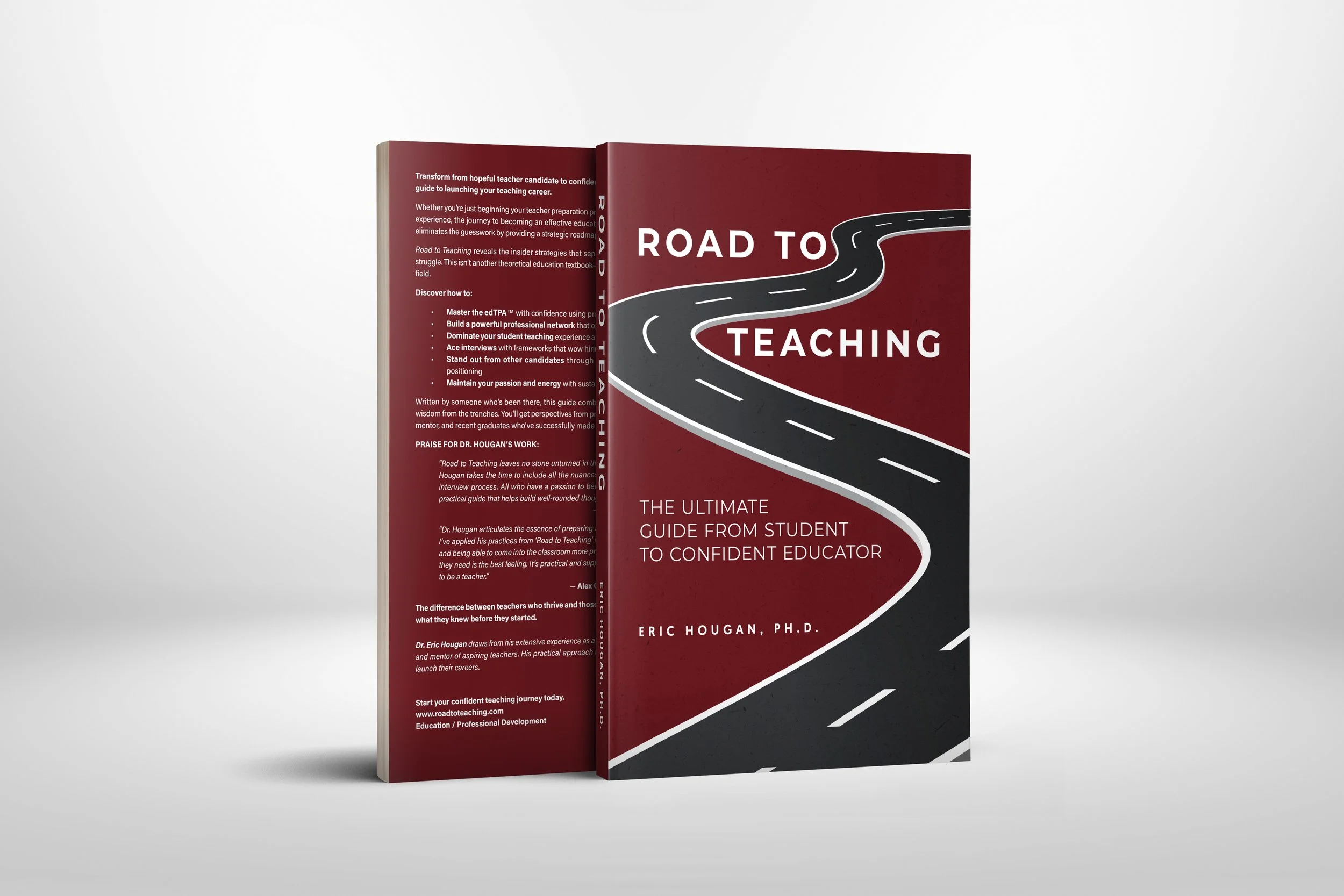Describe How You Plan Your Lessons
🎯 Quick Answer Strategy
Hiring principals want to understand your approach to lesson planning elements: learning objectives, standards alignment, assessments, activities, special accommodations, and reflection. Show them you plan systematically with student outcomes in mind, not just activities.
How to Answer Lesson Planning Questions
Using the 5-step framework from Road to Teaching:
They want to see that you plan systematically with learning objectives, standards, assessments, activities, accommodations, and reflection.
"I believe effective lesson planning starts with clear learning outcomes based on higher-order thinking and ends with reflection on student achievement."
Walk through your systematic planning process from objectives through assessment and reflection.
Show how your planning approach leads to clear learning outcomes and student success.
Share a specific lesson planning example that demonstrates your systematic approach.
Get the complete framework with detailed examples in Road to Teaching.
Sample Planning Process (Excerpt from Road to Teaching)
Learning Objectives: I begin by establishing clear learning outcomes based on higher-order thinking skills. Rather than just having students memorize facts, I focus on analysis, synthesis, and evaluation—helping students think critically about the content.
Standards Alignment: Next, I connect these learning outcomes to curriculum benchmarks and state standards, ensuring my lessons support broader educational goals while meeting district requirements.
Assessment Design: I then design assessments that measure whether students have met the learning objectives, using a variety of techniques beyond traditional tests—including formative assessments, performance tasks, and student self-reflection.
Instructional Activities: I structure lesson activities to meet diverse learning needs, incorporating best practices like learning stations, jigsaw approaches, and collaborative learning. I always include accommodations for ELL and special education students.
Reflection & Improvement: Finally, I reflect on lesson effectiveness and identify specific steps for improvement, using student feedback and assessment data to inform future planning.
Understanding Bloom's Taxonomy for Lesson Planning
Higher Order Thinking Skills
Analysis: Breaking down information, making inferences, finding evidence. Students correlate, differentiate, distinguish, prioritize, and recognize patterns.
Synthesis: Creating new products using prior knowledge. Students design, devise, formulate, generate, and integrate ideas.
Evaluation: Determining value and providing rationale. Students appraise, critique, defend, judge, and justify conclusions.
Foundation Skills
Knowledge: Remembering information. Students define, identify, list, and recall facts.
Comprehension: Understanding meaning. Students classify, explain, summarize, and paraphrase.
Application: Using information in new situations. Students solve problems, demonstrate, and implement concepts.
Pro Tips for Success
✓ 5-step response framework for any question
✓ 100+ real interview questions with sample answers
✓ edTPA™ success strategies
✓ Student teaching excellence guide
✓ Job search and networking tactics
